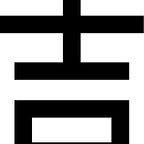Symbolism & Chinese Design
The language of symbols pervades Chinese writing, painting, and thought. There are two levels of communication in China: the practical function of speech and writing, and the symbolic meaning that hides just beneath the surface. Chinese symbolism adds depth to seemingly ordinary objects.
Wordplay and Symbolism
Symbolism is an essential part of Chinese culture, contained within fundamental methods of communication, such as speech patterns. Chinese languages are tonal, resulting in a fondness for puns and wordplay. In Mandarin Chinese, four distinct variations in tone are used to distinguish words from one another. For instance, “fu” can represent either good fortune or a winged bat, depending on the intonation used. For this reason, bats and their depiction are considered good luck.
Pictographic Symbolism
The written word in Chinese is also symbolic. Objects and ideas are symbolized by graphic characters rather than phonetic letters. Pictographic symbolism extends to Chinese art as well. A painting of bamboo and a plum tree, for instance, represents a man and his wife. Landscapes often contain mountains (symbols of longevity) and water (representing the sea of happiness). The union of male stone and female sea also refers to the harmony of yin and yang. Objects in Chinese paintings are almost always more than meets the eye.
Animals
Animals appear in abundance throughout Chinese culture, in drawings, on clothing, in statues, and in furniture carvings. They are harbingers of good luck, wealth, and happiness. Many Western animal associations are reversed in Chinese mythology. Bats-feared in the West-are symbolic of good fortune in China, while butterflies-representative of new life in Western folklore-have the same phonetic root as the word for a seventy-year-old man and are, therefore, associated with the wish to live to an old age. Animals can have male or female associations. Bears and dragons are male symbols of strength and vigor, while snakes are associated with seductive female beauty.
Colors
Often colors are symbolic and, like many Chinese symbols, take on different meanings in different contexts. Blue flowers, for instance, are unlucky when worn in the hair, yet blue clouds represent scholarly pursuit. Red and green are the colors of life. Redwhile green is the color of family and fertility. White symbolizes old age, wisdom, and purity. Its opposite, black, is often associated with honor and death. Yellow, symbolic of earth elements, is a lucky color representing progress and fame. Purple is an imperial color, symbolic of the Emperor and the heavens.
Five Elements
In Chinese philosophy, the five elements represent states of being that balance one another. Each element is associated with a direction and a color: water is northern and black, fire is southern and red, wood is eastern and blue, metal is western and white, and earth is the yellow center. Fire ascends, while water descends. Earth encases seeds, while wood grows towards the heavens. Fire burns wood and bends metal, while water overcomes fire and wears away earth. Together, the five elements create harmony in the natural world.
Flowers and Plants
Flowers are associated with beautiful women and seasonal changes, and each variation has its own hidden power. Spring flowers include magnolias and peonies, both symbols of wealth. The lotus is the flower of summer’s purity; the chrysanthemum represents the longevity of autumn. Bamboo is a winter plant, symbolic of long life and peace. Plants are central to the art of Chinese garden design. Symbolic of vitality and longevity, evergreen plants are the stalwarts of the garden, while spring and summer blooms represent renewal.
Household Objects
The items that make up daily life acquire deep meaning as symbols of the home and family. Vases, for instance, carry special significance. The word for vase is pronounced, “ping,” a homonym with the Chinese concept of peace. Objects such as writing brushes and inkstones are associated with scholars, while horn cups (symbolic of health and happiness) and branching coral (representative of wealth and status) are among the eight precious objects of the Buddha. Bowls, shaped like the Buddha’s round stomach, are also associated with enlightenment.
Numbers
Chinese mysticism is grounded in numerical systems: the twelve months of the year, the five elements, and the eight emblems of Buddhism, for example. Numerical systems are subject to change-numerology varies from person to person. Odd numbers are seen as masculine, while even numbers are considered feminine. The most auspicious numbers are generally one (symbolic of the undivided whole), two (representing balanced pairs), three (associated with the religious trinities of Confucianism, Taoism, and Buddhism), eight (phonetically connected with the word for prosperity), and twelve (symbolic of the lunar calendar). Four is usually considered unlucky, as it a homonym with the word for death, although four can also symbolize the four seasons, the four journeys of Siddhartha, or the four cardinal virtues of Confucianism.
Originally published at www.old.pagodared.com on February 4, 2011.
